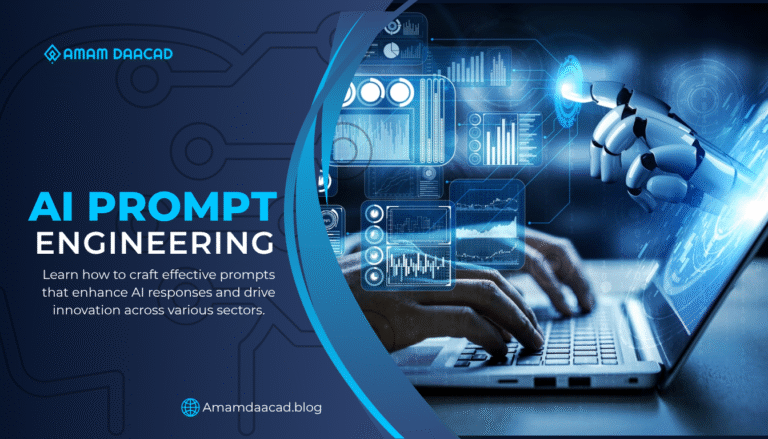Conversational AI : How It’s Transforming Customer Interaction in 2025

Understanding Conversational AI
Conversational AI is a subset of artificial intelligence designed to facilitate human-like interactions between machines and users. This technology empowers systems to understand, process, and respond to human language in a way that mimics natural conversations. Central to its functionality are key components such as Natural Language Processing (NLP), machine learning, and large language models (LLMs).
NLP serves as the backbone of conversational-AI, enabling systems to interpret and generate human language. It encompasses a range of tasks, including speech recognition, language understanding, and text analysis, which are crucial for engaging in meaningful dialogue. Through NLP, conversational agents can process user inputs, extracting sentiment, intent, and context, thus providing responses that are contextually relevant and coherent.
Machine learning further enhances conversational-AI by allowing it to improve over time. By analyzing vast amounts of conversational data, these systems can learn from past interactions and refine their responses, making them increasingly accurate and efficient. This adaptive capability is critical in delivering personalized customer experiences, as these AI systems can remember user preferences and prior exchanges, fostering a more tailored interaction.
Large language models, such as those developed by leading tech companies, represent the next evolution in conversational AI. They are trained on extensive datasets that encompass diverse topics and conversational styles, enabling them to generate human-like responses with remarkable fluency. By leveraging these models, businesses can create sophisticated chatbots and virtual assistants that can handle a wide range of inquiries, reduce customer service wait times, and enhance overall engagement.
In summation, understanding the fundamental elements of conversational AI is vital for recognizing its significance in transforming customer interactions. Through the integration of NLP, machine learning, and LLMs, this technology is redefining how businesses communicate with their customers, ultimately enhancing satisfaction and efficiency.
The Evolution of Conversational AI: A Brief History
Conversational AI has undergone a remarkable transformation over the last few decades, evolving from rudimentary systems to sophisticated, responsive technologies that significantly enhance customer interactions. The journey began in the 1960s with the development of simple rule-based chatbots, such as ELIZA, which allowed users to engage in text-based conversations. These early systems operated on pre-defined scripts, limiting their ability to understand context or respond to user queries beyond their programmed capabilities.
In the following decades, significant advancements in natural language processing (NLP) paved the way for more complex conversational agents. The introduction of machine learning algorithms in the 1990s allowed these systems to learn from user interactions, improving their ability to understand and generate human-like responses. This marked a turning point in the evolution of conversational AI, as applications began to emerge that could support customer service activities, helping businesses handle inquiries more efficiently.
The 2010s saw a rapid surge in conversational AI’s popularity due to the proliferation of messaging platforms and virtual assistants like Apple’s Siri, Amazon’s Alexa, and Google Assistant. These platforms leveraged deep learning techniques, which greatly enhanced their ability to comprehend user intent and deliver personalized responses. The integration of voice recognition further augmented user experience, enabling hands-free interactions and expanding the potential applications of conversational AI across various industries.
As we move into 2025, the landscape of conversational AI continues to evolve, with advancements in emotional intelligence and contextual comprehension transforming customer interactions. Businesses are now leveraging these advanced applications to provide 24/7 support, streamline communication, and foster deeper engagement with consumers. The historical journey of conversational AI showcases its potential to revolutionize customer service, providing an insightful glimpse into the future of human-computer interaction.
Current Applications of Conversational AI in Customer Service
Conversational AI has significantly reshaped the customer service landscape, introducing innovative solutions that enhance interactions between businesses and their customers. One of the most prevalent applications is the deployment of chatbots, which effectively handle frequently asked questions (FAQs). These AI-driven chatbots have the capability to provide instant responses, ensuring that customers receive the information they need without the delays often associated with human agents. By automating the handling of routine inquiries, businesses can reduce operational costs and allocate human resources to more complex issues.
Another key application is the use of virtual assistants, which support customers with a variety of tasks, from booking appointments to troubleshooting product issues. These assistants leverage natural language processing to understand customer requests more accurately, leading to higher satisfaction rates. The ability of virtual assistants to provide personalized responses based on customer data has further elevated the quality of service, making interactions feel more authentic and less transactional.
Voice interfaces are also playing a critical role in enhancing user experiences. With the proliferation of smart speakers and voice-enabled devices, customers are increasingly opting for voice commands to access services. This hands-free interaction not only improves accessibility but also provides a seamless user experience for individuals multitasking or with disabilities. The integration of voice technology into customer service operations exemplifies how conversational AI can adapt to diverse consumer needs and preferences.
The benefits of incorporating conversational-AI into customer service strategies are multi-faceted. By boosting efficiency through automation, businesses can manage higher volumes of inquiries while maintaining high levels of service. Furthermore, the continuous improvement of AI systems, through machine learning and data analysis, ensures that customer satisfaction remains a primary focus. Ultimately, the application of conversational-AI is not merely a trend but a transformative strategy that positions businesses for success in the competitive marketplace of 2025.
Impact of Conversational AI on Marketing Strategies
In recent years, the integration of conversational AI into marketing strategies has significantly transformed the way brands engage with their customers. Companies are leveraging this technology to personalize customer interactions, enabling tailored experiences that resonate with individual preferences and behaviors. By utilizing AI-driven recommendations, businesses can effectively analyze consumer data and deliver personalized content in a timely manner, enhancing overall customer satisfaction and loyalty.
One of the pivotal aspects of conversational AI is its capability to provide targeted promotions. Through sophisticated algorithms, AI can discern patterns in consumer behavior, allowing companies to deploy marketing campaigns that directly appeal to specific audience segments. This approach not only reduces the wastage of marketing resources but also elevates the effectiveness of promotional efforts, ensuring that customers receive relevant offers that align with their interests.
Furthermore, real-time communication facilitated by conversational AI tools, such as chatbots and virtual assistants, significantly improves customer engagement. These AI-enabled systems can interact with customers instantly, answering queries, resolving issues, and guiding them through the purchasing process. Such prompt responses contribute to a seamless customer journey, minimizing frustrations often associated with delays in traditional customer service. Through this dynamic interaction, brands can also gather invaluable insights into customer preferences, further refining their marketing strategies.
Overall, the infusion of conversational AI into marketing strategies not only enhances customer satisfaction through personalized experiences but also drives brand loyalty. By adopting these advanced technologies, businesses are better positioned to meet the evolving expectations of consumers, ensuring they remain competitive in an increasingly digital marketplace. The potential for conversational AI to revolutionize marketing is vast and continues to grow, making it an essential component of modern business strategies.
Challenges in Implementing Conversational AI
As businesses increasingly adopt conversational AI technologies to enhance customer interaction, they encounter several significant challenges that can impede successful integration. One of the primary concerns is data privacy. In an era where consumers are becoming more aware of their digital footprints, businesses must ensure that they handle personal data in compliance with regulations such as the General Data Protection Regulation (GDPR). Safeguarding sensitive information while utilizing AI-driven communications can be a complex endeavor, as companies must strike a balance between delivering personalized experiences and maintaining customer trust.
Another critical challenge lies in the requirement for conversational AI systems to understand diverse languages and dialects. With globalization, customer bases are no longer uniform; they encompass various linguistic backgrounds. The ability of conversational AI to accurately process and respond to queries in multiple languages, as well as understand regional dialects and idiomatic expressions, is essential. A failure to address this aspect can lead to misunderstandings, miscommunications, and ultimately customer dissatisfaction.
Furthermore, the potential for AI systems to misinterpret human intent poses significant hurdles. Natural language processing (NLP) continues to evolve, yet it is not foolproof. Conversational AI may struggle to correctly interpret nuances in tone, context, or cultural references. Such misinterpretations can lead to inappropriate responses that frustrate users and diminish the effectiveness of customer service interactions. Therefore, it is crucial for businesses to implement robust training protocols and continuous learning mechanisms to enhance the AI’s understanding and responsiveness.
Addressing these challenges is vital for the successful implementation of conversational AI in customer interaction strategies. By prioritizing data privacy, enhancing language capabilities, and improving AI understanding of human intent, organizations can better leverage the transformative potential of conversational AI technology.
NLP and LLMs: The Backbone of Conversational AI
Conversational AI has become a fundamental aspect of customer interaction across various industries, largely due to advancements in Natural Language Processing (NLP) and Large Language Models (LLMs). At its core, NLP is a branch of artificial intelligence that enables systems to understand, interpret, and generate human language in a way that is both meaningful and contextually relevant. Through techniques such as tokenization, parsing, and semantic analysis, NLP allows conversational agents to dissect and process user inputs, facilitating smoother and more intuitive interactions.
Large Language Models play a crucial role in enhancing the capabilities of NLP by leveraging deep learning architectures. Trained on vast datasets, LLMs have the ability to comprehend complex language patterns and context, enabling them to produce coherent and contextually appropriate responses. These models, such as OpenAI’s GPT and Google’s BERT, utilize transformer networks to analyze relationships between words in a sentence, yielding richer, more human-like communication. This proficiency in language understanding equips conversational AI systems to engage users on multiple levels, from casual inquiries to more intricate problem-solving scenarios.
The integration of NLP and LLMs results in significant improvements in response accuracy, which is vital for maintaining customer satisfaction. With their capacity for personalization, these technologies allow conversational agents to tailor interactions based on individual user preferences, previous conversations, and even emotional cues derived from text. Such capabilities not only increase engagement levels but also foster a sense of connection between consumers and brands.
As businesses seek to enhance customer experiences, understanding the technical foundations of conversational AI—rooted in NLP and LLMs—becomes increasingly important. This knowledge not only informs the development of more sophisticated AI systems but also aligns with evolving consumer expectations in an accessible, efficient, and responsive interaction landscape.
Emerging Trends in Conversational AI for 2025
As we look ahead to 2025, the evolution of conversational AI is set to be marked by several significant trends that will redefine customer interaction. One of the primary advancements is the integration of more sophisticated natural language processing (NLP) techniques. These improvements will enable conversational AIs to understand context better, allowing for a more personalized and engaging user experience. Companies are expected to adopt richly contextualized dialogues that go beyond simple keyword matching, leading to more intuitive conversations.
Another trend to watch is the rise of multimodal interactions. Future conversational AI systems will likely incorporate various input methods, such as voice, text, and visual elements. This shift will enhance accessibility and user engagement, accommodating varying preferences and needs. For instance, customers may switch from voice commands during their commute to text chat while at their desks, ensuring a seamless experience across platforms.
Consumer expectations will continue to evolve, with a growing demand for instantaneous and hyper-personalized responses. In 2025, businesses will need to harness the power of AI not just for efficiency but also for meaningful interaction. This means that brand voice and tone will become essential elements of conversational AI strategies. Brands will strive to create unique personalities for their AI agents, fostering stronger emotional connections with customers.
Organizations will also adapt their customer support frameworks to incorporate conversational AI more deeply. The automation of routine inquiries and transactions will free human agents to focus on more complex and nuanced customer needs. As AI technologies advance, the boundary between human and machine-mediated communication is expected to blur, creating an integrated approach to customer service that combines the strengths of both.
Case Studies: Real-World Examples of Success
As organizations increasingly adopt conversational AI technologies, numerous case studies illustrate the transformative impact of these tools on customer interaction. One notable example is Starbucks, which implemented the “My Starbucks Barista” voice-enabled ordering system. This feature allows customers to place their orders via voice commands using the mobile app, significantly enhancing user experience. The integration of conversational AI not only streamlined the ordering process but also captured valuable customer data, leading to improved personalization in marketing strategies. The success of this initiative is reflected in an increase in mobile app engagement and customer satisfaction scores.
Another prominent case is that of Sephora, which introduced a virtual assistant named Sephora Virtual Artist, powered by AI technology. This tool enables customers to try on makeup virtually through augmented reality, integrated with a conversational interface. The use of conversational AI allowed shoppers to ask questions, receive personalized product recommendations, and ultimately make informed purchasing decisions. The result has been a notable increase in online sales, with reports indicating that the conversion rates for users interacting with the virtual assistant were significantly higher than those who did not utilize it.
Furthermore, the telecommunications company Vodafone has embraced conversational AI with its customer service chatbot, TOBi. This digital assistant handles customer inquiries through various channels, including social media and the company’s website. By deploying TOBi, Vodafone aimed to reduce the load on human agents while improving response times for customers. As a result, the company reported a dramatic drop in average response time and an increase in first-contact resolution rates, showcasing the operational efficiency gained through conversational AI.
These case studies illustrate that the successful implementation of conversational AI entails not only technological advancement but also a focus on customer experience and operational efficiency. Organizations are realizing that thoughtful integration of these systems can yield significant benefits, including increased sales, enhanced customer satisfaction, and streamlined processes.
Strategies for Businesses to Leverage Conversational AI
In the rapidly evolving digital landscape of 2025, businesses must adopt robust strategies to effectively implement conversational AI technologies. A key component of this strategy is selecting the appropriate AI platform that aligns with the company’s goals and customer expectations. Organizations should evaluate various conversational AI solutions based on criteria such as scalability, integration capabilities, and user-friendliness. This selection process must also consider how well the AI can understand and generate natural language relevant to their customer base, ensuring a smooth interaction experience.
Once the right technology has been identified, the next essential step is designing effective conversational flows. A well-structured dialogue is vital for providing seamless interactions. Businesses should map out potential customer queries and design responses that facilitate a natural conversation. It is beneficial to implement a combination of AI and human oversight to address complex inquiries that might arise during interactions. Testing these conversational flows through simulated scenarios can significantly enhance response accuracy and user satisfaction.
Training relevant team members is another pivotal strategy for maximizing the benefits of AI-driven interactions. Employees should be equipped with the knowledge to manage and optimize the conversational AI system effectively. Regular training sessions can familiarize staff with the AI’s functionalities and equip them to troubleshoot any issues that may emerge during customer interactions. Furthermore, continuous feedback loops where teams analyze customer interactions can help refine AI performance over time, ensuring that the system evolves and improves in response to real-world usage.
Incorporating these strategies allows businesses to harness the transformative potential of conversational AI, ensuring they remain competitive in an increasingly digital marketplace while enhancing customer interactions and satisfaction.



Great breakdown of how NLP and machine learning work together in conversational AI. I’m especially interested in how these systems are learning to remember past interactions—do you think this raises any concerns about data privacy?
It’s exciting to think about how machine learning enables conversational AI to remember past interactions and preferences. This kind of personalization really takes customer service to the next level and makes experiences feel more human.